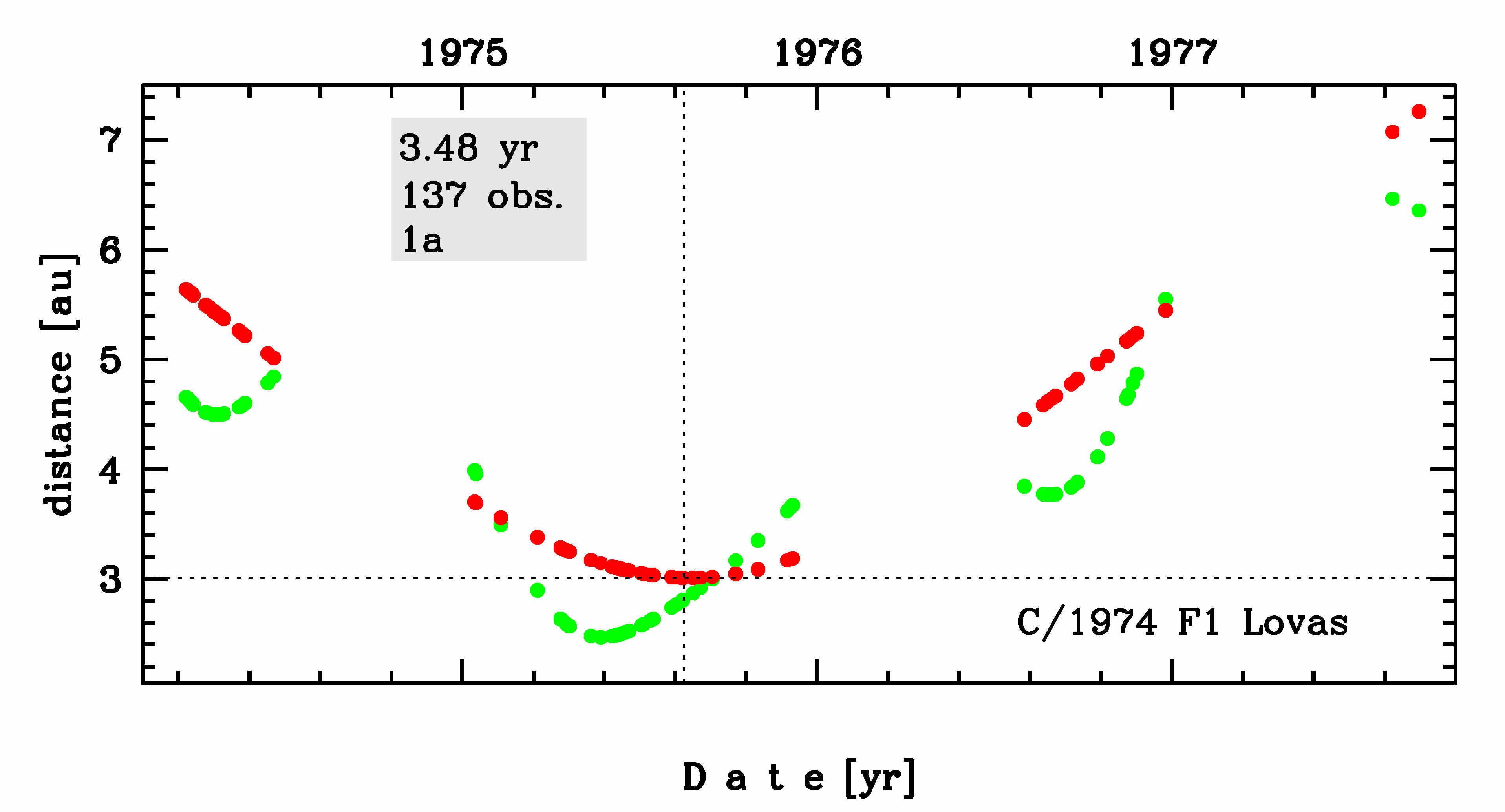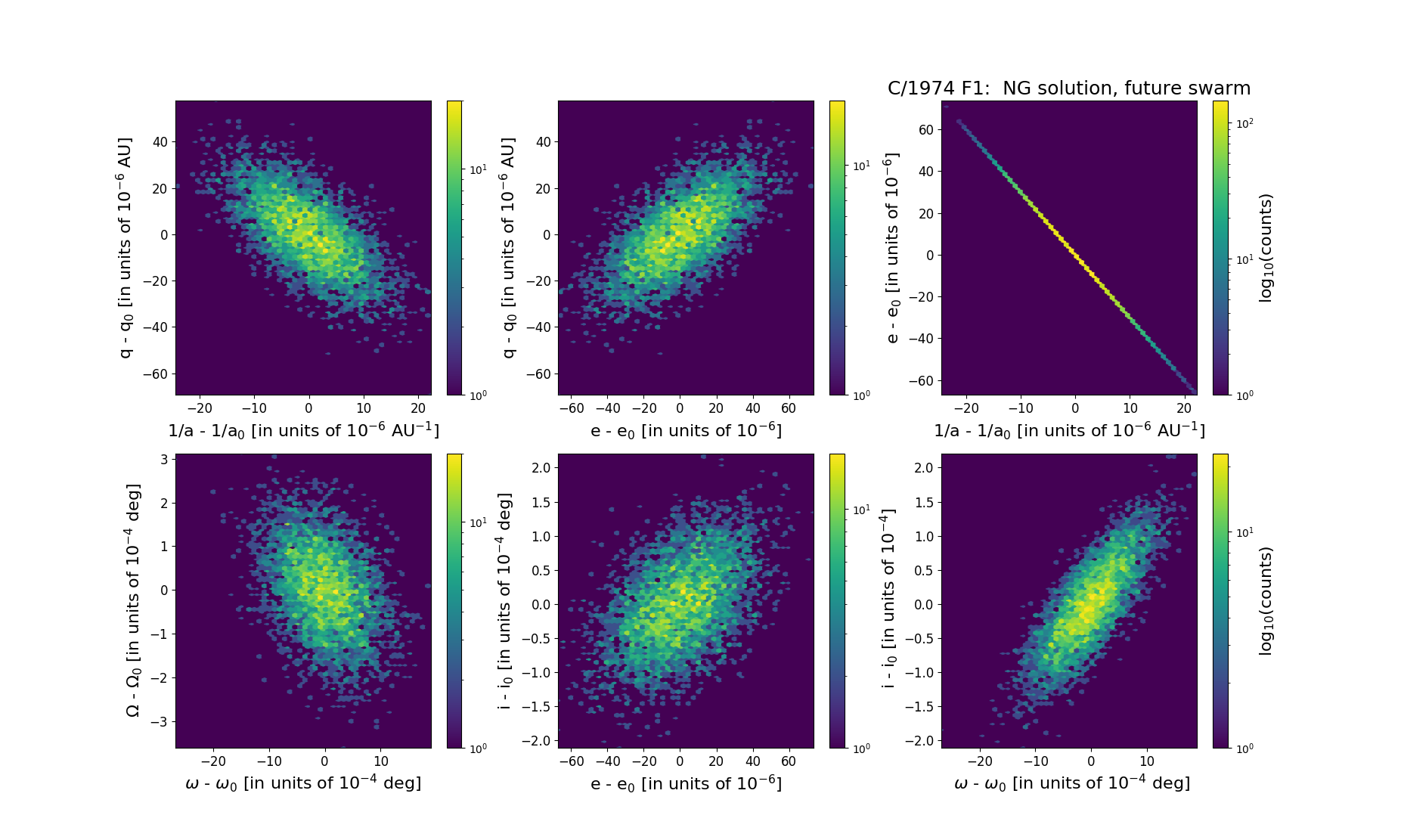C/1974 F1 Lovas
more info
Comet C/1974 F1 was discovered on 22 February 1974 by Miklós Lovas (Budapest Observatory, Hungary), that is 1.5 years before its perihelion passage.
Comet had its closest approach to the Earth on 23 May 1975 (2.470 au), about 3 months before its perihelion passage.
Solutions given here are based on data spanning over 3.48 yr in a range of heliocentric distances: 5.64 au – 3.011 au (perihelion) – 7.26 au.
This Oort spike comet suffers moderate planetary perturbations during its passage through the planetary system; these perturbations lead to a more tight future orbit with semimajor axis of about 1,900 au.
See also Królikowska 2020.
Comet had its closest approach to the Earth on 23 May 1975 (2.470 au), about 3 months before its perihelion passage.
Solutions given here are based on data spanning over 3.48 yr in a range of heliocentric distances: 5.64 au – 3.011 au (perihelion) – 7.26 au.
This Oort spike comet suffers moderate planetary perturbations during its passage through the planetary system; these perturbations lead to a more tight future orbit with semimajor axis of about 1,900 au.
See also Królikowska 2020.
| solution description | ||
|---|---|---|
| number of observations | 137 | |
| data interval | 1974 03 21 – 1977 09 11 | |
| data type | perihelion within the observation arc (FULL) | |
| data arc selection | entire data set (STD) | |
| range of heliocentric distances | 5.64 au – 3.01 au (perihelion) – 7.26 au | |
| type of model of motion | NS - non-gravitational orbits for standard g(r) | |
| data weighting | YES | |
| number of residuals | 273 | |
| RMS [arcseconds] | 1.08 | |
| orbit quality class | 1a | |
| orbital elements (barycentric ecliptic J2000) | ||
|---|---|---|
| Epoch | 2283 08 01 | |
| perihelion date | 1975 08 22.26492483 | ± 0.00204234 |
| perihelion distance [au] | 3.01047419 | ± 0.00001490 |
| eccentricity | 0.99842815 | ± 0.00002048 |
| argument of perihelion [°] | 261.338643 | ± 0.000526 |
| ascending node [°] | 12.320071 | ± 0.000091 |
| inclination [°] | 50.625063 | ± 0.000059 |
| reciprocal semi-major axis [10-6 au-1] | 522.13 | ± 6.81 |
| file containing 5001 VCs swarm |
|---|
| 1974f1n2.bpl |

